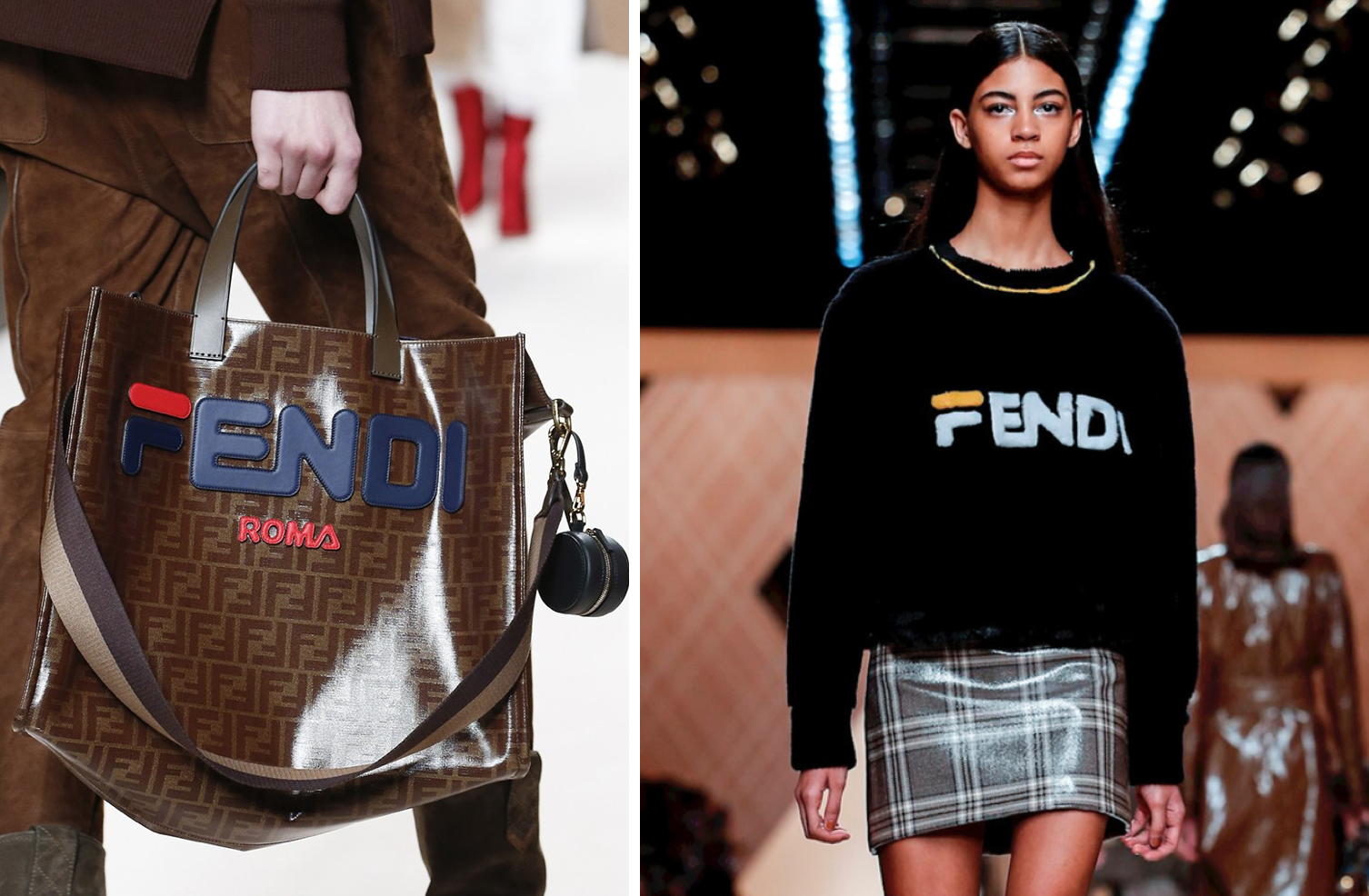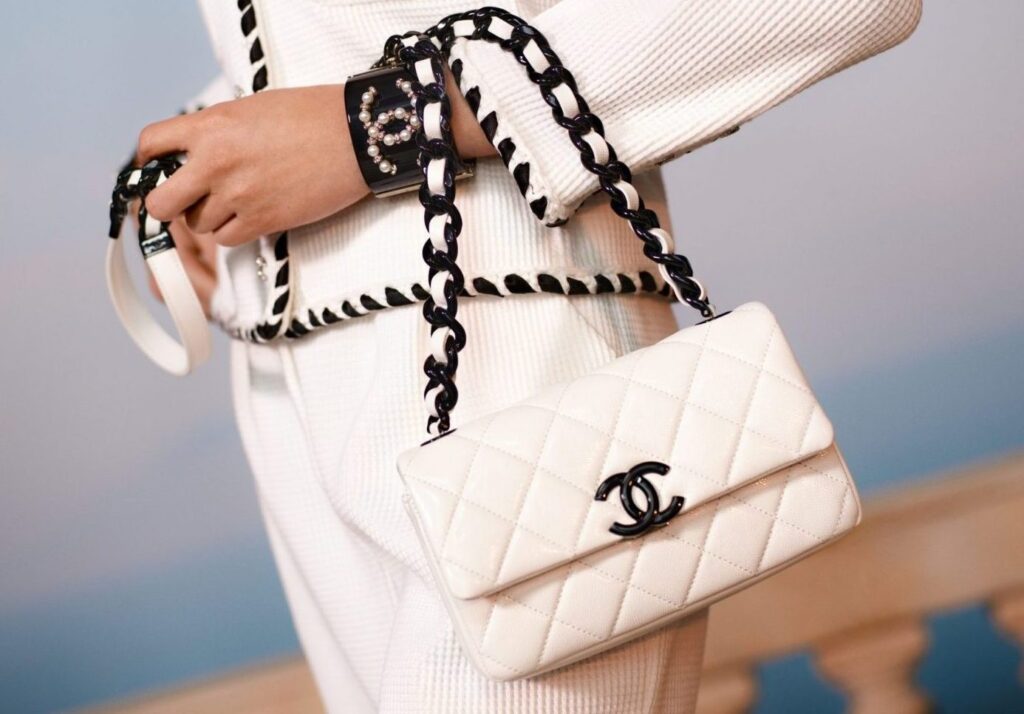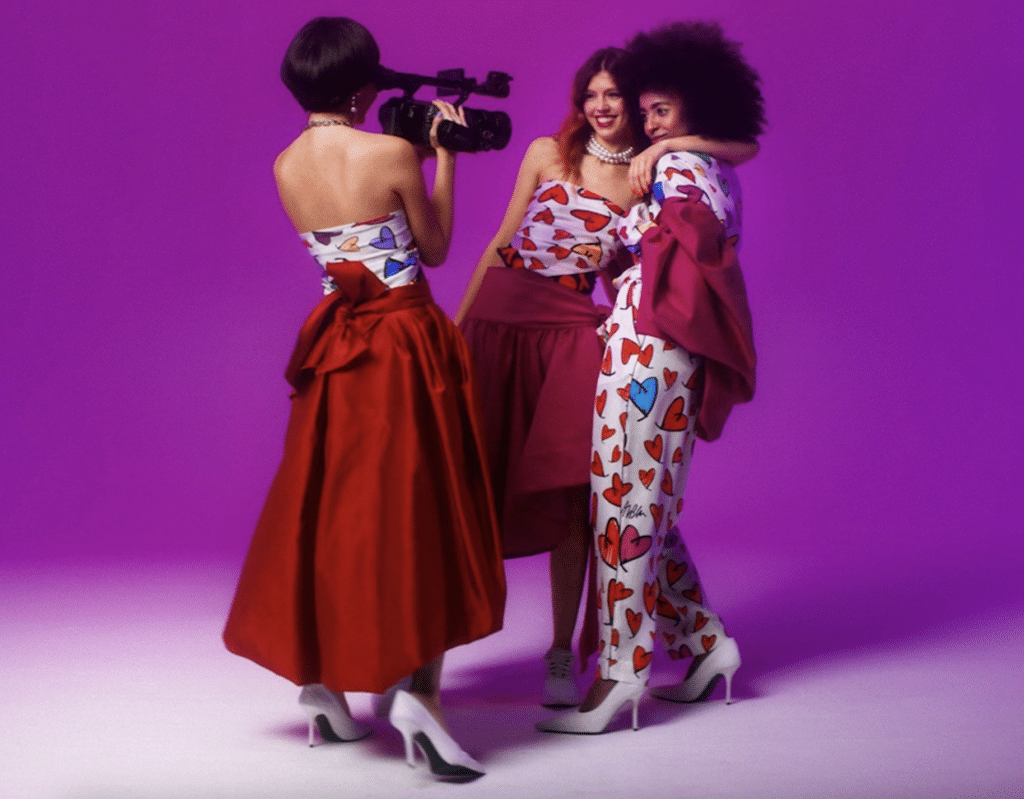Fashion is having a field day this season. There were severed heads (a la Rick Owens 2009) on the Gucci runway, puppies being toted by models at Tod’s, and before that, rainbow-colored lasers – and multi-hued trench coats, scarves, and fur – in Christoper Bailey’s Burberry swan song. In its own attempt to stand out in the crowd (i.e., on Instagram), Fendi incorporated some very Fila-esque graphics into its Fall/Winter 2018 collection as part of a collaboration with Instagram artist @hey_reilly, who first took on the Fendi, Fila mashup on his Instagram last year.
The 90’s era move has found no shortage of outlets announcing that Fendi “appropriated” Fila’s iconic logo. For the uninitiated, appropriation – a term without any real legal signifance – is loosely defined as the taking (or stealing) of something for one’s own use, typically without the owner’s permission. In the case at hand, that could be likened – again loosely – to trademark infringement.
As the Daily Front Row posited, “How ironic would it be if Fendi, a brand that has probably spent millions of dollars over the years [make that tens of millions of dollars] fighting to protect their own trademark, just straight-up ripped Fila’s logo for their own use?”

But that is not what is going on here. What we have here is, instead, an official collaboration, meaning that Fila approved Fendi and Reilly’s use of various elements of its iconic trademarks, not unlike the Vetements x DHL collaboration a few seasons ago.
According to a statement from the classic sportswear brand provided to TFL, “FENDI has teamed up with FILA on a limited-edition collection of apparel and accessories for women and men. A selection of women’s pieces debuted on the FENDI Fall/Winter 2018-2019 runway today, during the Milan Fashion Week, featuring FILA’s iconic ‘F’ fused with the FENDI Roma logo.”
But let’s say (just for argument’s sake) that Fendi had, in fact, “appropriated” Fila’s logo, namely its font and its distinctive “F” logos. What then? Well, things would be completely different, legally speaking, as such a move would give rise to merited claims of trademark infringement.
Both in the U.S. and in the European Union, Fila maintains trademark rights in its name and some of the various source-identifying elements of it, such as the stylized “F” mark, which appears on bags and sweaters, in which Fendi is written with a stylized “F.” Fila has maintained federal trademark rights in that “F” design – for use on men’s and women’s clothing – since 1976. It has also had rights on the specific “F” design in red and blue since 1987.
With such rights on mind, had the parties not contracted to collaborate on Fendi’s F/W 2018 collection, we would have a lot more than “appropriation” here, we would have reasonable claims of trademark infringement.

But aside from merely making use of Fendi’s legally-protected “F” marks, Fila’s proprietary font appears on the Fendi wares and bags. Protection for fonts is not necessarily as straight forward as the protection of specific names or logos.
Copyright law does not provide protection for typeface designs. According to Volume 37 of the Code of Federal Regulations, which speaks to the copyrightability of typefaces, “The following are examples of works not subject to copyright and applications for registration of such works cannot be entertained: … typeface as typeface.”
Trademark law will not protect the underlying design of a font in general. However, it will cover the actual use of a font, such as Disney’s famous script in its various logos and word marks, or as we have here, the “Fila font,” so to speak. Due to Fila’s longstanding use of its font, including its distinctive “F” and “A,” consumers have come to associate the font with the brand, thereby, bolstering the brand’s rights in its use of the font.
With that in mind, Fendi – no stranger to the fight against trademark-bearing fakes – opted to sidestep potential legal liability by teaming up with Fila (and potentially paying Fila for the rights to use its trademarks), instead.














